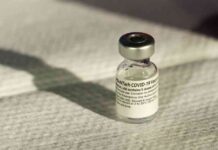Dealing with a Rare Inflammatory Disease: My Journey with No Cure
Seven years ago, I woke up with a slight pain in my lower back. The pain was coming from my right hip, but I didn’t think too much of it—I wrote it off as a temporary inconvenience and thought I’d be able to walk it off. But the pain didn’t go away. After two weeks of working through the pain at my restaurant job, my manager noticed that I was limping and uncomfortably switching my weight to my left leg to feel some relief. Until that moment, I wasn’t conscious of how bad it really seemed on the outside. My manager suggested I get checked out by a doctor.
I was 21 at the time, and I figured that whatever I had would be easily treated. The doctor did a physical exam when I did stretches to check what hurt and what I couldn’t do, but he didn’t know what the root cause of the pain was. So, he told me to stay off my feet for a few days and that I should be fine. I doubted that my pain would be related to a serious condition. But I didn’t get better. And I never returned to work after that day. I knew something was not right.
After a week, I went from limping around to not being able to move without sharp and excruciating pain. I couldn’t believe that my life was changing so rapidly. I was an extremely active person, enjoying going on walks and working out, but now I was fatigued and consumed by discomfort. I was completely bedridden and the pain was debilitating to the point where I needed help to do anything; I couldn’t even get out of bed. My pain levels were high, being between seven and eight on most days. I made a separate appointment with my family doctor, and she could immediately tell that something serious was going on because of how seriously I was describing my pain.
Living in Toronto, Canada, getting appointments for specialists is always a waiting game. Canada has a publicly funded healthcare system, which has resulted in limited specialty care resources and inconsistency with family physicians being able to order advanced diagnostic tests, according to a study in the Canada Family Physician Journal. While I was watching the clock tick until my appointment dates, I religiously went to my physical therapy appointments twice a week. In these appointments, my physical therapist and I discovered that the most intense pain was coming from my right sacroiliac (SI) joint, which links the pelvis and lower spine. We worked on targeting my pelvic pain to strengthen the area. I used a Transcutaneous Electrical Nerve Stimulation (TENS) machine—a device that connects electrodes to the surface of my skin sending electrical currents to help block the pain—and I also applied heat to my back at the end of each session. I was starting to feel better, and I was able to walk a bit easier. I also started using a cane sparingly as a mobility device to help me walk around my house. I was told that movement is medicine, which I found truth in—but, at the same time, I was still in pain. My mental health was at a low from this drastic life change and being in pain 24/7. I dealt with anxiety and depression while waiting for real answers, and it didn’t help that I isolated myself from everyone other than my parents, who I lived with. I couldn’t take not having answers to the constant question of what was happening to me. I was worried I would never be able to go back to work or do what I loved, like going for walks.
I waited six long months for an appointment to see a specialist about my pain. I saw Robert Inman, MD, a rheumatologist at Toronto Western Hospital, who sent me for X-rays, an MRI, and bloodwork. After the tests, Dr. Inman told me my bloodwork showed I have the HLA-B27 gene, which shows that I’m more susceptible to developing inflammatory rheumatologic conditions like spondyloarthritis, according to the National Library of Medicine. So, I went back to get the special MRI a month later to detect if there was inflammation in my body. Then, I waited two more months after that for the results. When I walked into the follow-up appointment to hear the MRI results in 2018, Dr. Inman said that they had found inflammation around my spine and pelvis. He told me about a condition called ankylosing spondylitis—and that I have it. It’s an inflammatory disease with no cure that can cause the bones in the spine to fuse over time, according to the Mayo Clinic.
While the disease isn’t directly life-threatening when it’s well-managed, people with this condition have a 43 percent higher risk of death from vascular problems, 60 percent higher risk of death from cerebrovascular problems, and a 35 percent higher risk of death from cardiovascular disease, per the Spondylitis Association of America. They might also be at risk for fibrosis in the lungs, along with a rare neurological condition called cauda equina syndrome due to the scarring of nerves at the base of the spine.
Among the genetic factors that may influence ankylosing spondylitis, the HLA-B27 gene accounts for about thirty percent of the overall genetic risk, per the National Library of Medicine. The doctor prescribed me Remicade, an immunosuppressive medication administered through injection or IV, to stop the inflammation and sent me on my way with a brochure. He told me that this would be a lifelong journey. There is no cure for my condition, but some of my pain would be relieved through the treatment plan involving physical therapy and IV infusions of Remicade every six weeks. I felt numb hearing my diagnosis. Being only 22 years old, it was hard to accept being so young and knowing that I would potentially be in pain for the rest of my life.
The months following my diagnosis are a blur. It felt heavy, serious, and overwhelming as I made sense of what was going on in my body and started navigating how to move forward. I bunkered down at home, overloading myself with medical information. Receiving my diagnosis was a very bittersweet moment. I had the answers I had been stressing for months to know, but it was so hard to accept at the time. My friends were all going to bars and doing normal 20-year-old activities, and I was at home learning how to use a walker and wheelchair and focusing on pain management rather than having fun. For the first four to five months of having symptoms, I completely isolated myself from friends—I couldn’t relate to them anymore. I didn’t want to keep explaining myself, so I distanced myself.
Then, in 2022, I was also diagnosed with fibromyalgia. Around the time that I was diagnosed with ankylosing spondylitis, my doctor thought that I also had fibromyalgia, which involves widespread musculoskeletal pain accompanied by fatigue, sleep, memory, and mood issues, according to the Mayo Clinic. At the recommendation of my doctor, I started taking Lyrica, a medication that helps treat nerve pain. Anytime I stopped taking the medication, I felt a burning pain in my thighs. In 2022, the burning feeling spread all over my body. That’s when I brought up my symptoms to my rheumatologist and received an official fibromyalgia diagnosis. Now, there are days when I have pain flare-ups and need to sleep all day or use mobility aids—and there are times when I have energy and can go have fun at the beach or jump on a trampoline. That’s why I say I have a dynamic disability. The severity of my symptoms really depends on the day. Some days, I get upset and wonder “Why me?” But, I let myself accept those emotions and feel them through.
Writing has helped me come to terms with my medical conditions. Back in 2017 after my pain started, I had begun writing to extended friends and family members on Facebook about what was going on in my life. Then, I started a blog in November 2018. While researching ankylosing spondylitis, I had noticed that everything online was research-based and coming from doctors, but there wasn’t much writing that came from patients. So, I started sharing my story with the hope of connecting with others who were going through what I was. The act of writing was therapeutic for me, and I ended up growing a following online. Connecting with others made it easier for me to accept my ankylosing spondylitis diagnosis.
Today, I’m still in pain every day—about five to six on the pain scale—but it’s manageable for the most part. And most days, I don’t notice the pain until I get up and move around. I still receive infusions of Remicade every six weeks, but I don’t take any other medications. Along with living with the physical pain, it’s mentally taxing to be worried about my health and wondering when the pain is going to flare up again. Besides connecting with others online, I’ve been in therapy and gratitude journaling so I can reflect on my life.
At first, writing was a hobby. But when I saw the impact it could have on those around me, I realized, “Oh, I can write, I can do this.” I started writing for WebMD, Healthline, and Health Union, and I also moderate an ankylosing spondylitis Facebook group for WebMD. My Instagram following is at 15 thousand followers now, and I get to share my journey with my condition and normalize living with a dynamic disability. Now, seven years after my diagnosis, I wish I could have told my 22-year-old self that living with a chronic illness isn’t a bad thing and life isn’t over. Even though it felt like the end of the world at the time, it’s not. And everything is going to be okay.

















